Abstract
The biochemical and chemical characteristics were determined for 156 clinical isolates of pink-pigmented bacteria that are similar to but distinct from Methylobacterium extorquens (synonymous with Pseudomonas mesophilica). These isolates were gram-negative, nonfermentative, usually nonvacuolated, coccoid rods; all grew at 35 degrees C and were catalase and urease positive; the majority grew on MacConkey agar and were variable for oxidase production and motility. On the basis of oxidation of xylose and mannitol and hydrolysis of esculin, these 156 strains were subdivided into four groups that were designated "pink coccoid" groups I, II, III, and IV. Groups I, II, and III are similar to an unnamed taxon described by Gilardi and Faur in 1984; only strains of group IV hydrolyze esculin. The cellular fatty acid compositions of strains of groups I, II, and III were essentially identical and differed from strains of group IV by the absence of 3-OH-C14:0 and the presence of C19:0 delta and 2-OH-C19:0 delta. The fatty acid composition of group IV strains was most similar to that of M. extorquens but differed by the presence of small amounts of two C17:1 acids, 3-OH-C16:0, and 2-OH-C18:1.
Full text
PDF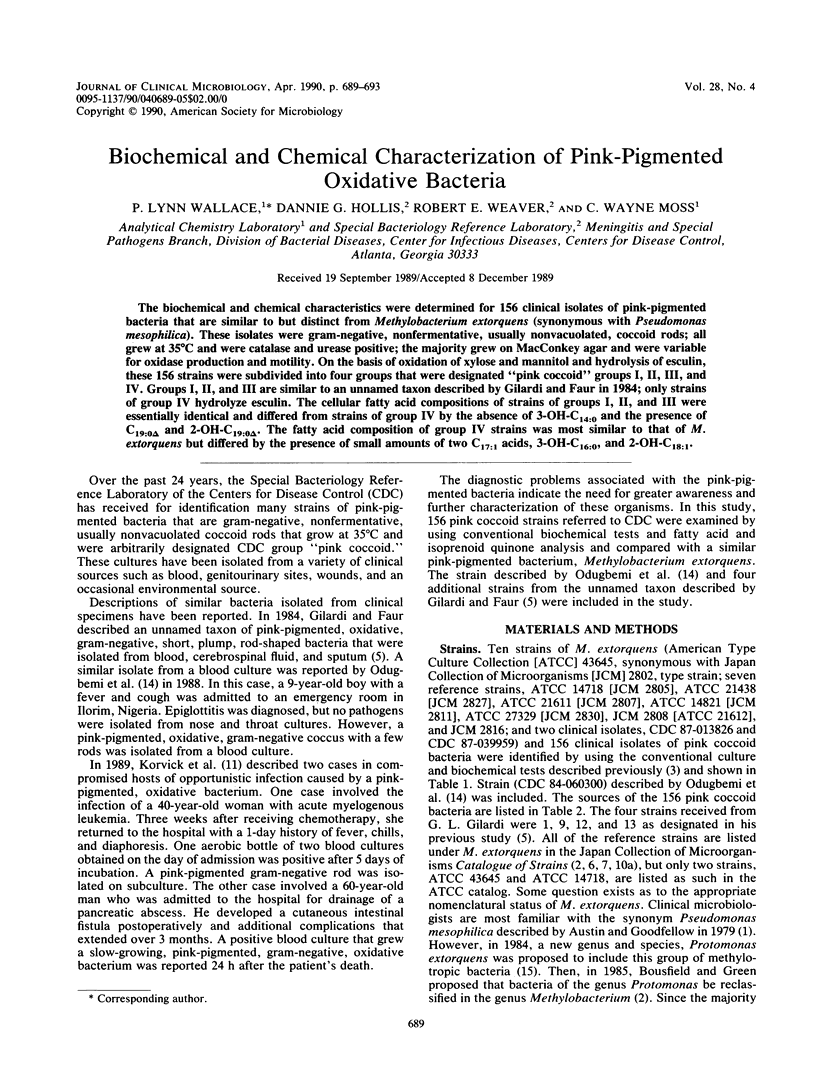
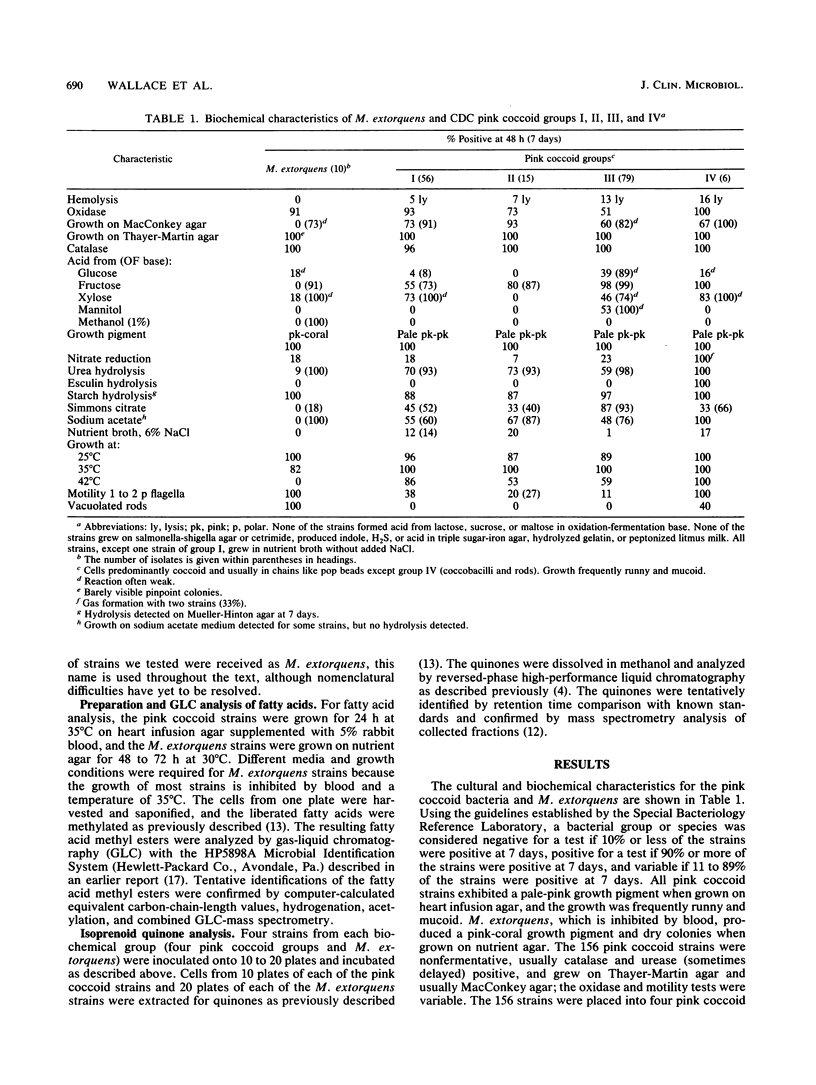
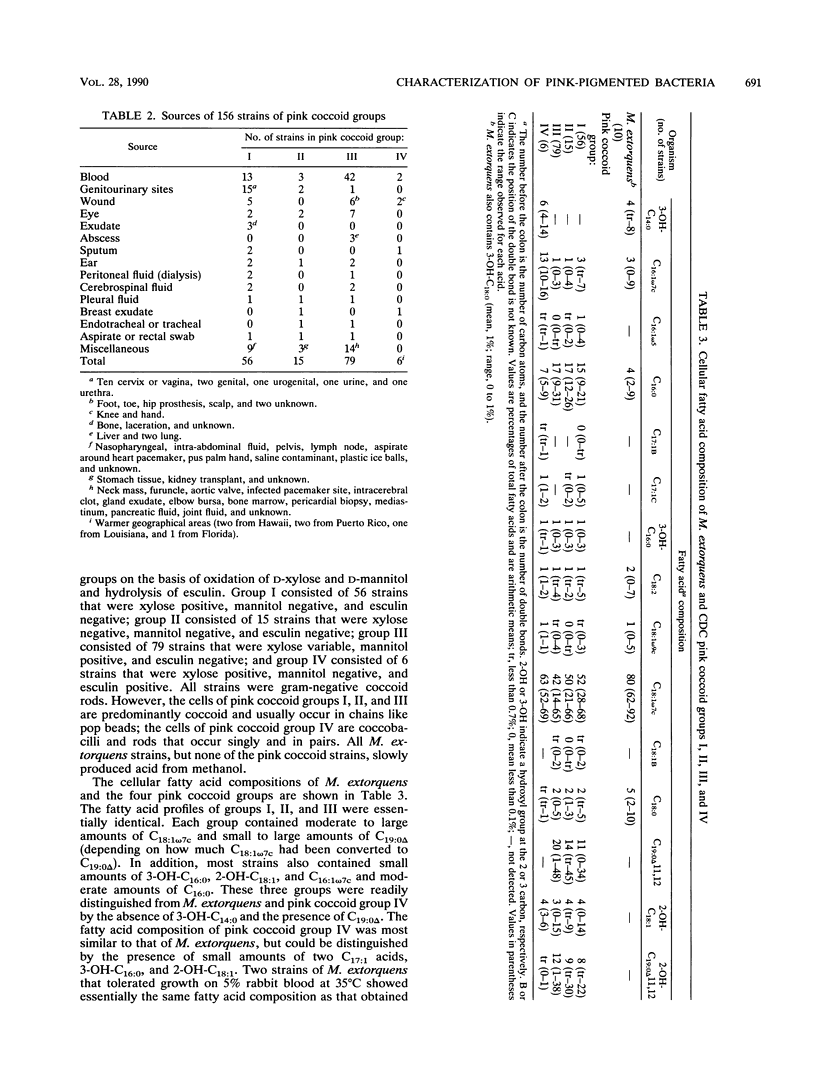
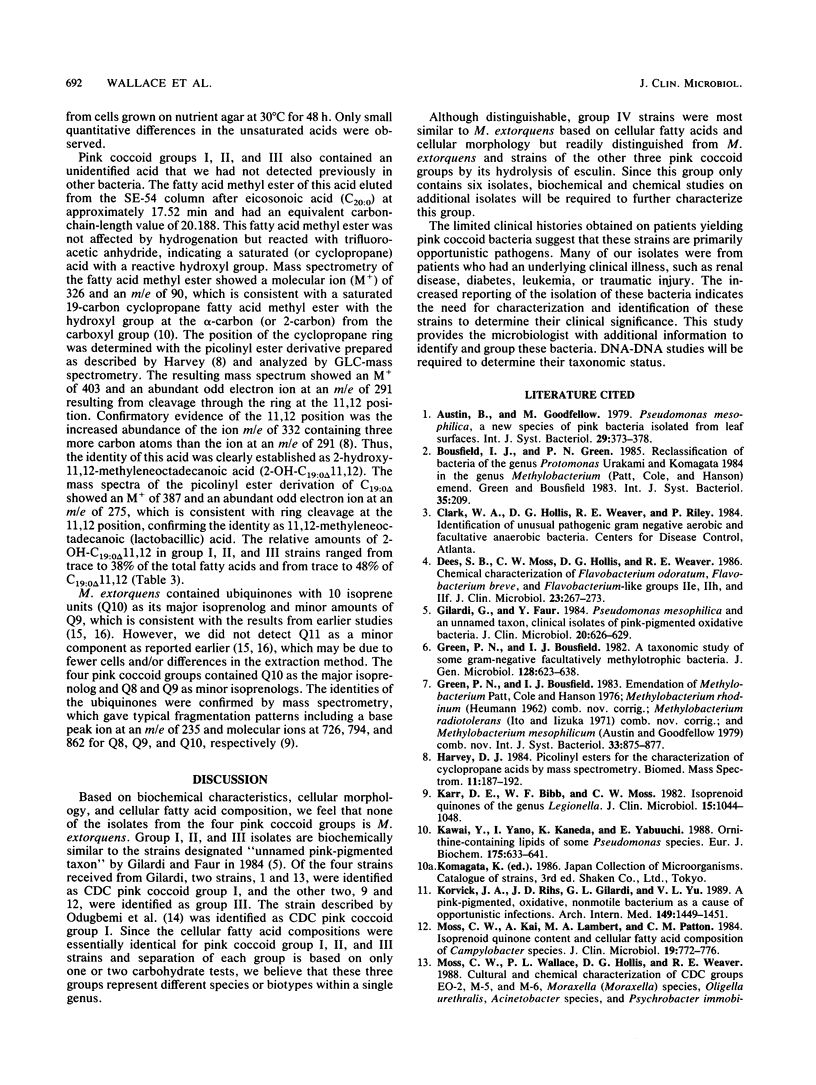
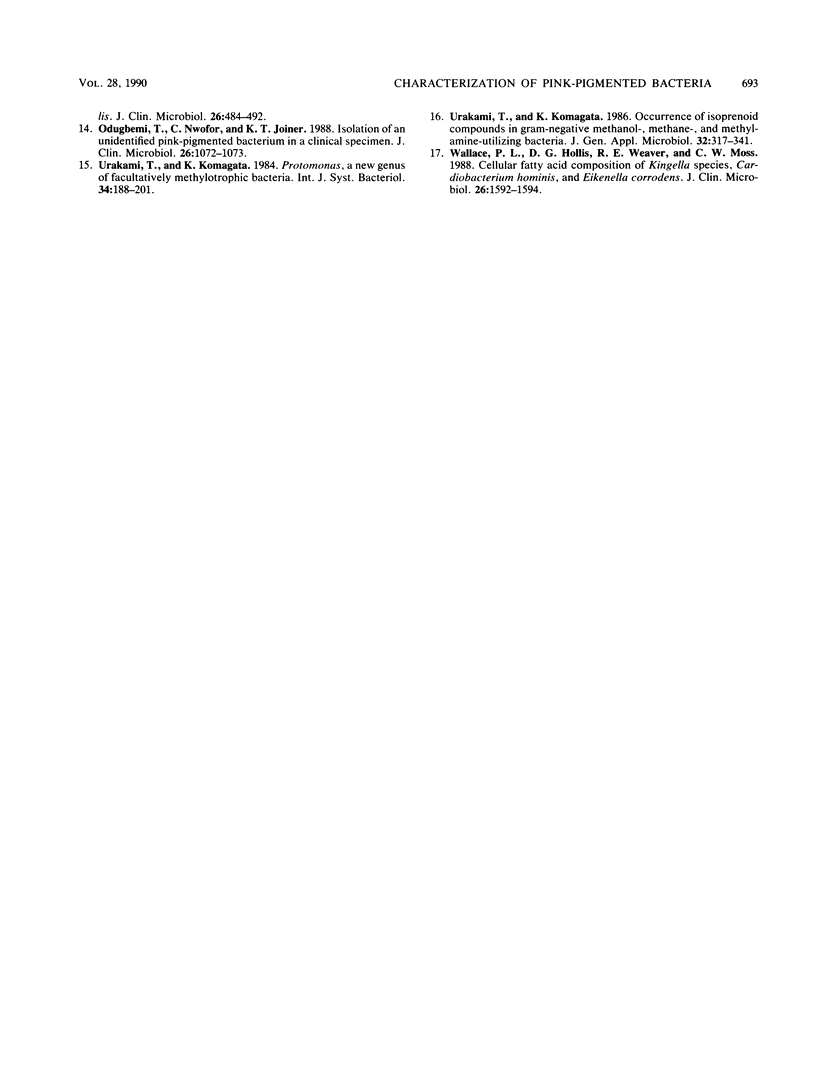
Selected References
These references are in PubMed. This may not be the complete list of references from this article.
- Dees S. B., Moss C. W., Hollis D. G., Weaver R. E. Chemical characterization of Flavobacterium odoratum, Flavobacterium breve, and Flavobacterium-like groups IIe, IIh, and IIf. J Clin Microbiol. 1986 Feb;23(2):267–273. doi: 10.1128/jcm.23.2.267-273.1986. [DOI] [PMC free article] [PubMed] [Google Scholar]
- Gilardi G. L., Faur Y. C. Pseudomonas mesophilica and an unnamed taxon, clinical isolates of pink-pigmented oxidative bacteria. J Clin Microbiol. 1984 Oct;20(4):626–629. doi: 10.1128/jcm.20.4.626-629.1984. [DOI] [PMC free article] [PubMed] [Google Scholar]
- Karr D. E., Bibb W. F., Moss C. W. Isoprenoid quinones of the genus Legionella. J Clin Microbiol. 1982 Jun;15(6):1044–1048. doi: 10.1128/jcm.15.6.1044-1048.1982. [DOI] [PMC free article] [PubMed] [Google Scholar]
- Kawai Y., Yano I., Kaneda K., Yabuuchi E. Ornithine-containing lipids of some Pseudomonas species. Eur J Biochem. 1988 Aug 15;175(3):633–641. doi: 10.1111/j.1432-1033.1988.tb14239.x. [DOI] [PubMed] [Google Scholar]
- Korvick J. A., Rihs J. D., Gilardi G. L., Yu V. L. A pink-pigmented, oxidative, nonmotile bacterium as a cause of opportunistic infections. Arch Intern Med. 1989 Jun;149(6):1449–1451. [PubMed] [Google Scholar]
- Moss C. W., Kai A., Lambert M. A., Patton C. Isoprenoid quinone content and cellular fatty acid composition of Campylobacter species. J Clin Microbiol. 1984 Jun;19(6):772–776. doi: 10.1128/jcm.19.6.772-776.1984. [DOI] [PMC free article] [PubMed] [Google Scholar]
- Moss C. W., Wallace P. L., Hollis D. G., Weaver R. E. Cultural and chemical characterization of CDC groups EO-2, M-5, and M-6, Moraxella (Moraxella) species, Oligella urethralis, Acinetobacter species, and Psychrobacter immobilis. J Clin Microbiol. 1988 Mar;26(3):484–492. doi: 10.1128/jcm.26.3.484-492.1988. [DOI] [PMC free article] [PubMed] [Google Scholar]
- Odugbemi T., Nwofor C., Joiner K. T. Isolation of an unidentified pink-pigmented bacterium in a clinical specimen. J Clin Microbiol. 1988 May;26(5):1072–1073. doi: 10.1128/jcm.26.5.1072-1073.1988. [DOI] [PMC free article] [PubMed] [Google Scholar]
- Wallace P. L., Hollis D. G., Weaver R. E., Moss C. W. Cellular fatty acid composition of Kingella species, Cardiobacterium hominis, and Eikenella corrodens. J Clin Microbiol. 1988 Aug;26(8):1592–1594. doi: 10.1128/jcm.26.8.1592-1594.1988. [DOI] [PMC free article] [PubMed] [Google Scholar]


